@HighwayToHall
“There is
no such thing as a ‘future’ Hall of Famer at tight end…It’s difficult for any
tight end to gain admittance to Canton no matter how many passes he catches.”[1]
Eight
tight ends are currently enshrined in the NFL Hall of Fame. And only one tight
end appeared on the Preliminary List for the Class of 2014 (Mark Bavaro). One
of the reasons there are so few tight ends represented in Canton
“The tight
end has to be a pass receiver-blocker combination, and he can expect contact on
every play. Most of his routes are to the inside…where violent experiences are
the reward…The attrition rate on tight ends is high. They usually don’t last
too long, or if they do, their years of peak performances are limited.”[2]
In 1978,
the NFL added a new official (the side judge) whose responsibility, in part,
was to limit the assault on tight ends. As Dave Casper explained it, “[I]n the
past, if it was third and eight and the linebacker had coverage on me, he could
wait for me to move three or four yards and just tackle me…The odds were for it
because he’d get caught maybe once out of 10 times.”[3]
The tight end position developed in the 1950s. “[T]he
first player who clearly defined what a tight end could do was Ron Kramer of
the 1959 Packers, a 6’3”, 230-pound receiver who was also a devastating
blocker.”[4]
“The tight
end’s potential as a pass receiver became increasingly apparent through the
exploits of Mike Ditka of the Bears, John Mackey of the Colts and Billy Cannon
of the Raiders, each of whom made a significant contribution to the game and
the position during the ‘60s.”[5]
At the
time of the NFL-AFL Merger, the three tight ends with the most receiving yards
were Mike Ditka (5,156), Jackie Smith (5,115), and John Mackey (4,548). These
three men are in the Hall of Fame. The only other tight ends enshrined in Canton
Is there
room for more tight ends? Certainly. But without the argument that “so-and-so
is a member of the All-Decade Team,” it becomes more difficult. (For the
record, the members of the All-Decade Team of the 2000s are Tony Gonzalez and
Antonio Gates). How do you separate the remaining players? Receptions?
Receiving Yards? Touchdowns? Super Bowl rings? Pro Bowls? Reputation? For the
purposes of this article, we are going to limit our discussion to the 58 men
who have been named to 2 or more Pro Bowls. The list is as follows:
Billy Joe Dupree
|
|||
Jim R. Mitchell
|
|||
At first
glance, these men appear to be the cream of the crop. However, as always, feel
free to submit your nominations of players who should be included for one
reason or another.
Now, 58
players are too many to evaluate. So first, let’s eliminate those players who
have not achieved the minimum receiving numbers established by the 8 tight ends
currently in the Hall of Fame. After all, it is going to be extremely difficult
to make an argument for a player that has fewer catches, yards, etc. than all
tight ends in the Hall and failed to receive recognition as one of the top 2
players at his position during a decade.
Name
|
Receptions
|
Receiving
Yards
|
Touchdowns
|
Dave Casper
|
302
|
4169
|
48
|
Mike Ditka
|
427
|
5812
|
43
|
John Mackey
|
331
|
5236
|
38
|
Ozzie Newsome
|
662
|
7980
|
47
|
Charlie
Sanders
|
336
|
4817
|
31
|
Shannon Sharpe
|
815
|
10060
|
62
|
Jackie Smith
|
480
|
7918
|
40
|
Kellen Winslow
|
541
|
6741
|
45
|
It looks
like our magic numbers for a tight end are 300/4000/30. So who do we lose?
Fewer than 300
catches
|
Fewer than
4000 yards
|
Fewer than 30
touchdowns
|
Bob Trumpy
|
Doug Cosbie
|
Frank Wycheck
|
Jim Gibbons
|
Billy Cannon
|
Steve Jordan
|
Milt Morin
|
Billy Joe Dupree
|
Jim R. Mitchell
|
Billy Joe Dupree
|
Jim Gibbons
|
David Hill
|
Bubba Franks
|
Fred Arbanas
|
Charle Young
|
Marv Cook
|
Alvin Reed
|
Dave Kocourek
|
Dave Kocourek
|
Willie Frazier
|
Ted Kwalick
|
Billy Cannon
|
Ted Kwalick
|
Jim Gibbons
|
Bubba Franks
|
||
Alvin Reed
|
Jacque MacKinnon
|
|
Willie Frazier
|
Mark Chmura
|
Mark Chmura
|
Fred Arbanas
|
Marv Cook
|
Milt Morin
|
Mark Chmura
|
Jacque MacKinnon
|
Alvin Reed
|
Ted Kwalick
|
Ferrell Edmunds
|
Junior Miller
|
Ferrell Edmunds
|
Paul Costa
|
Marv Cook
|
Junior Miller
|
Ernie Warlick
|
Ferrell Edmunds
|
Jacque MacKinnon
|
Junior Miller
|
Paul Costa
|
Paul Costa
|
Ernie Warlick
|
|
Ernie Warlick
|
In looking
at the above list, I am going to make an executive decision and only drop the
players who appear in two or more of the above columns. As such, we lose:
Jim Gibbons
|
Milt Morin
|
Billy Joe Dupree
|
Bubba Franks
|
Marv Cook
|
Dave Kocourek
|
Billy Cannon
|
Alvin Reed
|
|
Willie Frazier
|
Fred Arbanas
|
Mark Chmura
|
Ted Kwalick
|
Ferrell Edmunds
|
Junior Miller
|
Jacque MacKinnon
|
Paul Costa
|
Ernie Warlick
|
This may
not have been the best decision, because we lose the top tight ends in AFL
history, most notably Arbanas and Kocourek, but, as they fall under the purview
of the Seniors’ Committee, we will evaluate their cases when and if they are
nominated.
Unfortunately,
there are still a lot of names left. What else can we do to eliminate some
people? Well, we at the Highway to Hall do not like compilers, players who hang
around a long time and thus have impressive career numbers, despite never
having many, if any, stand out seasons. We think of them as the Harold Baines
All-Stars (feel free to submit nominations for a football counterpart). In
looking at our list of Hall of Fame tight ends, they each had at least 4
seasons with 40 or more receptions. With the understanding that the tight end
position has changed, and more passes are being thrown in general, let’s look
at the list of tight ends that have four or more seasons with 40+ catches.
Tony Gonazlez (16)
|
Owen
Daniels (5)
|
Shannon Sharpe (11)
|
Chris Cooley (5)
|
Antonio Gates (10)
|
Eric Green (5)
|
Jason Witten (10)
|
Pete
Holohan (5)
|
Jeremy Shockey (9)
|
Riley Odoms (5)
|
Frank Wycheck (8)
|
Desmond
Clark (5)
|
Keith Jackson (7)
|
Dan Ross
(5)
|
Freddie
Jones (7)
|
Mickey Shuler (5)
|
Ozzie Newsome (7)
|
Jerry Smith (5)
|
Jackie Smith (7)
|
Mark Bavaro (4)
|
Bob
Tucker (7)
|
Dave Casper (4)
|
Kellen Winslow (7)
|
Brent
Celek (4)
|
Heath
Miller (7)
|
Dallas Clark (4)
|
Ben Coates (6)
|
Ken
Dilger (4)
|
Paul Coffman (6)
|
Mike Ditka (4)
|
Todd Heap (6)
|
Jackie Harris
(4)
|
Brent Jones (6)
|
Dustin
Keller (4)
|
Steve Jordan (6)
|
John Mackey (4)
|
Todd Christensen (6)
|
Randy
McMichael (4)
|
Jay Novacek (6)
|
Zach
Miller (4)
|
Wesley Walls (6)
|
Marcus
Pollard (4)
|
Kellen Winslow Jr. (6)
|
Pete Retzlaff (4)
|
Greg
Olsen (6)
|
Charlie Sanders (4)
|
Vernon
Davis (6)
|
Tony
Scheffler (4)
|
Alge Crumpler (5)
|
As we suspected, the list is
definitely skewed towards more modern tight ends. Let’s look at one more list.
Each of our Hall of Fame tight ends had at least 4 seasons with 500+ yards
receiving. The others who can say that are as follows:
Tony Gonzalez (16)
|
Jay Novacek (5)
|
Shannon Sharpe (11)
|
Jerry Smith (5)
|
Antonio Gates (10)
|
Bob Tucker (5)
|
Jason Witten (10)
|
Wesley Walls (5)
|
Keith Jackson (8)
|
Kellen Winslow Jr. (5)
|
Ozzie Newsome (8)
|
Brent Celek (5)
|
Jackie Smith (8)
|
Greg Olsen (5)
|
Steve Jordan (7)
|
Marl Bavaro (4)
|
Riley Odoms (7)
|
Raymond Chester (4)
|
Jeremy Shockey (7)
|
Alge Crumpler (4)
|
Kellen Winslow (7)
|
Mike Ditka (4)
|
Heath Miller (7)
|
Jimmie Giles (4)
|
Todd Christensen (6)
|
Eric Green (4)
|
Ben Coates (6)
|
Rodney Holman (4)
|
Vernon Davis (6)
|
Dustin Keller (4)
|
Todd Heap (6)
|
Ron Kramer (4)
|
Brent Jones (6)
|
Randy McMichael (4)
|
Dave Casper (6)
|
Milt Morin (4)
|
Charlie Sanders (6)
|
Rich Caster (4)
|
Frank Wycheck (6)
|
Pete Retzlaff (4)
|
Paul Coffman (5)
|
Dan Ross (4)
|
Chris Cooley (5)
|
Mickey Shuler (4)
|
Owen Daniels (5)
|
Aaron
Thomas (4)
|
Russ Francis (5)
|
Bob Trumpy (4)
|
Freddie Jones (5)
|
Jim Whalen (4)
|
John Mackey (5)
|
Charle Young (4)
|
Of our remaining list, which tight
ends did not achieve either feat?
Doug Cosbie
|
Jim R. Mitchell
|
David Hill
|
Okay, that
is not a big help, but it does drop us to 29 names, most of whom were very
popular players. One can make the argument that the remaining players, in
addition to the 8 Hall of Famers, make up the list of the greatest tight ends
in history. As such, let’s look at each player in more detail. The names are in
alphabetical order so feel free to skip the ones in which you have no interest.
Mark
Bavaro
For a
period of time, Bavaro was considered the prototype for the tight end position,
and the man many future tight ends and receivers would be measured against:
Chris Smith, Derek Brown, Kyle Brady, Eric Green, Jeremy Shockey, Anthony
Becht, Javon Walker, Michael Crabtree, Anthony Fasano, and Rob Gronkowski have
all been compared to Bavaro.
“One of a
kind…Run, block and catch. That was a football-playin’ guy right there.”—Bill
Parcells.[6]
“I think
Mark Bavaro is the best tight end in football because he is the only true tight
end in football. He blocks. He catches. He punishes.”—Mike Ditka.[7]
“The
greatest blocking job by a tight end I’ve ever seen in my life.”--John Madden,
after a game in 1986.[8]
“Mark was
a tremendous player. In my opinion, there aren’t many—I don’t know if there’s a
more complete tight end than Mark Bavaro.”—Bill Belichick.[9]
On a
Monday Night Football game on December 1, 1986 , the 7-4-1 49ers led the 10-2
Giants 17-0 at the half. In the 3rd quarter, starting at their 49
yard line, Phil Simms completed a short pass to Bavaro, who turned it into a
31-yard gain by dragging 4 defenders for 20 yards. The play, often featured on
NFL Films, set the tone for the rest of the game as the Giants scored on that
possession and went on to win 21-17. A week later, against the 11-2 Redskins,
Bavaro caught 5 passes for 111 yards and a touchdown in the 24-14 victory. He
led the Giants to their first Super Bowl title that season, earning 1st
Team All-Pro Honors, as well as his first trip to the Pro Bowl.
Unfortunately,
the human body wasn’t meant to be used in the Earl Campbell-like mode with
which Bavaro played. Injuries limited his career to 9 seasons and 126 career
games. In those seasons, he caught 351 passes for 4,733 yards and 39
touchdowns, earned 2 trips to the Pro Bowl, 2 1st Team All-Pro
honors, and 2 Super Bowl titles.
When his
name came up on the 2007 Preliminary List, Hall voter Paul Zimmerman wrote,
“Why hasn’t he made it before now? His name certainly has come up. I’d vote for
him in a heartbeat. This is mysterious. Have there been negatives? I can’t
recall any. OK, so he didn’t catch as many passes as other guys did, but
blocking? Oh my God, he hunted linebackers down. Defensive ends, too. Please,
let’s get him in there."[10]
Rich
Caster
“Too fast
and too tall to stop one-on-one,”[11]
Caster was a nightmare for defenses. His 17.19 yards/reception ranks first
among tight ends with a minimum of 300 catches. On September
24, 1972 ,
Caster put on one of the greatest performances by a tight end in history.
Clinging to a 30-27 4th quarter lead against the Baltimore Colts,
Caster hauled in a 79 yard touchdown pass from Joe Namath to extend the Jets
lead. Following a Johnny Unitas touchdown pass that again cut the Jets lead to
3, Caster caught an 80 yard touchdown pass to finish the scoring and secure the
Jets victory. Caster finished the afternoon with 6 catches for 204 yards and 3
touchdowns. His 204 yards receiving is the third highest single game total
among tight ends, trailing only Shannon Sharpe and Jackie Smith. Further, he
became one of 12 players in history to have multiple 70-yard touchdown catches
in a single game.[12]
By the end of the season, Caster caught 39 passes for an astounding 833 yards
(21.36 yards/catch) and 10 touchdowns. That season he became the last tight end
to average 20 or more yards/catch with a minimum of 35 receptions. He made the
1st of his 3 Pro Bowl selections following the season.
In 1974,
his 89-yard touchdown catch against the Miami Dolphins tied him for the longest
TD catch by a tight end in NFL history with John Mackey.
Caster
spent 8 seasons as a New York Jet, catching 245 passes for 4,434 yards and 36
touchdowns. Following the Oilers trade of Jimmie Giles, the Oilers acquired
Caster in exchange for 2 7th round picks (#187 overall in 1979
(Keith Brown) and #190 overall in 1980 (Bennie Leverett)). With the Oilers,
Caster made his first two postseasons, helping Houston New Orleans Washington
Raymond
Chester
Todd
Christensen
A
four-year starter at running back for BYU, Christensen was selected in the 2nd
Round of the 1978 Draft by the Dallas Cowboys. After spending his first season
on injured reserve with a broken foot, the Cowboys asked Christensen to try
tight end. Christensen preferred to stay in the backfield so the Cowboys
released him after the final Preseason game. The Giants signed him in time for
the opening game and, after appearing in one play, promptly released him. He
signed with the Raiders after their 4th game and became a stalwart
on special teams for the next 3 seasons. But his presence on this list is as a
result of his career beginning in 1982. During the strike-shortened season,
following the retirement of Raymond Chester and an injury to Derrick Ramsey,
Christensen was given an opportunity as a tight end. He caught only 3 passes in
the first 2 games, but following the work stoppage, his role changed. In the
first game after the strike, Christensen caught 8 passes for 83 yards and a
touchdown in a 28-24 victory over the Chargers. In the final 6 games of the 9
game season, Christensen caught 31 passes, and added 11 more in 2 playoff
games. He followed that up with 4 of the biggest seasons any tight has ever
had.
Year
|
Receptions
|
Yards
|
Average
|
TDs
|
1983
|
92
|
1247
|
13.6
|
12
|
1984
|
80
|
1007
|
12.6
|
7
|
1985
|
82
|
987
|
12
|
6
|
1986
|
95
|
1153
|
12.1
|
8
|
To put
this into perspective, here are the tight ends with 1,000 yard receiving
seasons:
Rank
|
Player
|
Team
|
# of Seasons
|
1
|
Tony Gonzalez
|
4
|
|
2
|
Jason Witten
|
4
|
|
3
|
Todd
Christensen
|
3
|
|
4
|
Shannon Sharpe
|
3
|
|
5
|
Kellen Winslow
|
3
|
|
6
|
Antonio Gates
|
2
|
|
7
|
Ozzie Newsome
|
2
|
|
8
|
2
|
||
9
|
Mark Bavaro
|
1
|
|
10
|
1
|
||
11
|
Ben Coates
|
1
|
|
12
|
Mike Ditka
|
1
|
|
13
|
Rob Gronkowski
|
1
|
|
14
|
Pete Retzlaff
|
1
|
|
15
|
1
|
||
16
|
Jackie Smith
|
1
|
|
17
|
Kellen Winslow
Jr.
|
1
|
In the
strike-shortened 1987 season, Christensen added 47 catches for 663 yards, but
his 1988 season was cut short due to leg injuries, and then he was released
during the 1989 preseason.
Christensen
completed his career with 461 catches for 5,872 yards, and 41 touchdowns.
Unfortunately for Christensen, he only had 6 seasons as a full-time starter,
and 2 of those were cut short due to work stoppages. But for those 6 seasons he
was one of the top tight ends in history. He was named to 5 consecutive Pro
Bowls and was twice selected as a 1st-Team All-Pro and twice
selected to the 2nd Team.
Ben
Coates
Ben Coates
was the perfect tight end for Coach Bill Parcells’ tight end oriented offense.
Big and fast with soft hands, Coates was a good blocker with a terrific work
ethic. In his first two seasons out of Livingstone College New England , Coates joined the
Baltimore Ravens in 2000, helping them to a victory in Super Bowl XXXV.
Coates
retired with 499 catches for 5,555 yards and 50 touchdowns. As stated above, he
was named to the All-Decade Team of the 1990s.
Paul
Coffman
A former
walk-on at Kansas State
Between
1981 and 1983, the Packers had the best trio of receivers in the NFL, with
Coffman, James Lofton, and John Jefferson. Despite possessing a high-powered
passing attack, Green Bay
Chris
Cooley
A 3rd
round pick out of Utah State Witten
Alge
Crumpler
“The guy
is so good, it’s just not fair.”[14]
For four seasons, Crumpler was one of the most dominant tight ends in the game.
From 2003-2006, he represented the NFC in the Pro Bowl. During that time
period, only Gonzalez and Gates had more receiving yards and touchdowns among
tight ends. And Crumpler’s 14.0 yards per reception led all tight ends, with
only Dallas Clark within a yard of Crumpler’s average. But then Michael Vick’s
career took a detour. And with him, he took Crumpler’s success. As Vick
struggled with the West Coast Offense and how to be a pocket-passer, Crumpler
was his security blanket. Without Vick, the Falcons turned to Joey Harrington in
2007. Crumpler produced his fewest receiving yards since his rookie season. The
Falcons released him following the season, at which time Crumpler joined the
Titans, who, unfortunately for Alge, subjected him to the “quarterbacking
skills” of Vince Young. Needless to say, Crumpler’s numbers continued to
decrease. In 2010, he joined the Patriots for his final season, but he served
in a backup capacity to Rob Gronkowski and Aaron Hernandez. In his ten NFL
seasons, Crumpler totaled 373 receptions for 4,743 yards, and 39 touchdowns.
Russ
Francis
Francis
grew up in Hawaii Oregon
He
attended the University of Oregon Oregon Oregon State
In 1975,
he was named to the NFL All-Rookie Team after catching 35 passes for 636 yards
and 4 touchdowns. In 1976, the Patriots featured one of the great running
offenses in history, totaling 2,948 yards, a total that still ranks 8th
all-time despite taking place in a 14-game season. With the emphasis on the
ground game, the Patriots only completed 146 passes on the season. As a result,
Francis’ numbers dropped to 26 catches for 367 yards. But he hadn’t lost
anything, as evidenced by his 6 catch/139 yard game in a 30-27 victory over the
Steelers, a season in which Pittsburgh
1977 got
off to a bad start when guards John Hannah and Leon Gray walked out on the
team. The Pats slipped to third place and Francis only caught 16 passes for 229
yards, but he was again named a Pro Bowler.
The
following season had a tragic beginning for the Patriots, as wide receiver
Darryl Stingley suffered an injury that left him paralyzed. The Patriots
marched on, however, again finishing in 1st place with an 11-5
record. Francis made his 3rd consecutive Pro Bowl, with 39 catches
for 543 yards. And the Patriots set a still-standing NFL record with 3,165
yards rushing.
After the
1978 season, Francis was involved in a motorcycle accident in which he suffered
a broken arm and ankle and killed his passenger. He was in a wheelchair for a
month and thus reported to camp in 1979 out of shape. Nonetheless, the Pats
were 6-2 at the halfway point of the season, and Francis had 29 catches and 5
touchdowns. But in game against Miami Miami New
England
went 3-5 in the second half and missed the playoffs by one game.
In 1980, New England finished 10-6 but
missed out on the playoffs. Francis caught 41 passes for 664 yards and 8
touchdowns, and then, he abruptly retired, purportedly unhappy with life as a
football player.
He spent
1981 working as a broadcaster, until Bill Walsh convinced him that life is too
short and he wouldn’t get a second chance at being a professional football
player. The 49ers traded a 1st Round pick (#27 overall—Lester
Williams), 2 Second Round picks (#41—Andre Tippett and #55—Darryl Haley), and a
4th Round Pick (#111—Bryan Ingram) to the Pats for Francis. He
became San Francisco
Francis
finished his career with one more season as a Patriot in 1988, and retired with
393 receptions for 5,262 yards and 40 TDs.
Antonio
Gates
The
Odyssey of Antonio Gates:
Gates was
an All-State football and basketball player in high school. In basketball, he
led Detroit Central to the State Championship and was runner-up to Dane Fife
for Michigan Michigan State Eastern Michigan . He joined the
basketball team and became eligible after the first semester. In 18 games he
averaged 10.2 points and 7.4 rebounds per game. However, after a first round
loss in the MAC tournament, EMU fired head coach Milton Barnes, and replaced
him with Jim Boone, who wanted a team of role models for the university and the
community. Several players transferred or were dismissed, including Gates, who
was dismissed for academic issues.
Gates then
transferred to the College of the Sequoias in California Henry Ford Community College Michigan Kent State Michigan State Michigan State
In his
first season with Kent State Kent State Kent State Oklahoma State , Alabama Pittsburgh Indiana Kent State Kent Kent
As a
senior, Gates averaged 20.6 point and 7.7 rebounds per game, 1st Team
All-MAC, runner-up for MAC Player of the Year, and Honorable Mention
All-American, but a loss to Central Michigan (and Chris Kaman) in the MAC
Tournament Final sent them to the NIT, where they were summarily dismissed by
the College of Charleston. Gates ended his career with a school single-season
record of 640 points.
After a
poor showing at the Portsmouth Invitational, a basketball proving ground for
second-tier draft hopefuls, Gates held private workouts for several NFL teams.
Although not drafted, Gates signed a 2-year contract with the Chargers. 8 Pro
Bowls and 3 1st Team All-Pro selections later, the rest is history.
Jimmie
Giles
A 3rd
Round pick of the Houston Oilers in 1977, Giles and 4 draft picks were traded
to the Bucs for the first overall choice in the 1978 draft (Earl Campbell). A
big target for his era at 6-foot-3 and 245 pounds, Giles spent 9 seasons in a Tampa Bay Tampa October
20, 1985 ,
Giles caught 4 touchdown passes, a single game total that trails only the
record-setting 5 caught by Jerry Rice and Kellen Winslow. Despite Giles’
efforts, the Bucs lost 41-38 to the Miami Dolphins that day.
Despite
toiling on bad teams in Tampa
The Bucs
released Giles during the 1986 season, and he was picked up by the Detroit
Lions. He was later traded to the Philadelphia Eagles[17]
where he ended his career with 350 receptions for 5,084 yards and 41
touchdowns. In 2011, the Bucs selected him to be the third member of the
franchise’s Ring of Honor, joining Lee Roy Selmon and John McKay.
Tony
Gonzalez
1325
catches. 15,127 yards. 111 touchdowns. Any questions?
Eric
Green
“If you
had an Erector set and somebody said, ‘Make me a tight end,’ this is who you’d
make.”[18]—Sam
Rutigliano, Green’s head coach at Liberty University
When
Rutigliano arrived, Green had made 37 receptions in 3 less than impressive
seasons. Rutigliano, however, saw “Mark Bavaro in a bigger package” and
redesigned the offense around Green, who caught 62 passes for 905 yards and 10
touchdowns as a senior.[19]
The Pittsburgh Steelers subsequently selected Green in the 1st Round
(No. 21) of the 1990 NFL Draft.
“Maybe you
get some people who are trying to get drafted No. 1 who really aren’t
interested in playing professional football. They are more interested in
getting a political base to get as much money as they can. I’d just as soon not
have people like that around, if it’s a first-round choice or whatever. I think
what we’ve proved is 12th-round choices are as important as
first-round choices. Maybe we put too much value on first-round choices. He’s
not worth that much to us anymore. He missed all this time. It’s not worth it.
I’m not interested in Eric Green right now. I’m interested in the guys we have
here. I’m only interested in our people and he’s not one of our people right
now.”[20]—Steelers
head coach Chuck Noll.
Green held
out for 51-days, missing all of training camp and not signing until the day
after the season opener. Head coach Chuck Noll was not interested in having
Green on the team. Nonetheless, Green became a starter Week 5. The Steelers
were 1-3 and the offense had scored 0 touchdowns in 46 possessions. In his
first 2 starts, Pittsburgh
“He’s big
enough to block people like a tackle. He’s fast enough to be a wide receiver
and make receiver-type catches. And he’s fluid enough to beat linebackers and
secondary people from the tight end spot. He’s an unbelievable athlete who I
think is going to be a legitimate superstar. Hey, he’s a superstar already.”[21]—Steelers
offensive coordinator Joe Walton.
Green was
the perfect tight end for Joe Walton’s offense. But in his second season, he
suffered a partially torn posterior cruciate ligament during the preseason,
causing him to miss much of training camp. The inactivity added 20 pounds to
his already large frame. The injury hampered him all year until he broke his
ankle in November, causing him to miss the final 5 games of the season.
Nonetheless, in 11 games he caught 41 passes for 582 yards and 6 touchdowns.
“There’s
quite a bit of difference in the offenses. There are times he might be the
primary receiver and times he won’t. I don’t think you can build a team with
one guy.”[22]—Steelers
new offensive coordinator Ron Erhardt.
Following
the 1991 season, Bill Cowher replaced Chuck Noll as head coach of the Steelers
and Ron Erhardt replaced Joe Walton as offensive coordinator. With the coaching
change, less of the offensive focus was geared toward Green, which ultimately
was a good thing. Green injured his shoulder during the preseason, then
reinjured himself on the first play of the season opener against the Houston
Oilers, causing him to miss the first 4 games. After returning, he caught 14
passes for 152 yards and 2 touchdowns in 5 games, including the game-winner
against Houston
“Your
value is correlated to your accountability. That’s going to be measured over
time.”[23]—Steelers
head coach Bill Cowher.
After a
disappointing 1992 season, Green dedicated himself to working hard throughout
the offseason to prepare for the 1993 season, which was the final year of his
contract. The hard work paid off, as Green appeared in 16 games for the first
time in his 4 year career. The Steelers made the playoffs but lost to Joe
Montana and the Chiefs in overtime. Green’s touchdown with 4:11 remaining gave Steelers
24-17 lead. He ended the year with 63 catches for 942 yards and 5 touchdowns. Yet
when the AFC Pro Bowl squad was named, Green was listed as the first alternate
behind Shannon Sharpe and Keith Jackson. Jackson, who had 39 catches for 613
yards, agreed he shouldn’t have been selected. But 1993 was the first year of
fan voting, which counted for one-third of the total, and ultimately was the
difference maker for Jackson Jackson
“Eric
feels he’s being held hostage. He’s extremely upset. He’s real bitter right
now.”[24]—Green’s
agent Drew Rosenhaus.
As a free
agent, the Steelers used the franchise tag on Green, and offered the minimum
one-year contract for a tight end franchise player ($1.434 million), while
trying to work out a multi-year contract. Green wanted $2.5 million per year
while Pittsburgh Pittsburgh Carnell Lake
“This is
how people have to run their business and we all realize that. Eric Green is
just the flavor of the week.”[25]—Keith
Jackson’s agent Gary Wichard.
Dolphins’
tight end Keith Jackson had stated 1995 might be his last season. Unsure of Jackson Buffalo
“I didn’t
want him on our football team.”[28]—Dolphins
head coach Jimmy Johnson.
Shortly
after Johnson took over coaching duties, Green injured his knee. There were
discrepancies in the story about how the injury occurred. Green later missed a
non-mandatory rehab assignment, the only injured Dolphin to do so, and he was
released. Despite failing his physical, he signed with the Ravens four weeks
into the 1996 season on a 1-year/$432,000 contract. He was finally cleared to
play in time for Baltimore Denver
“Eric has
been one of the surprises in camp. There have been no problems with his knee,
and he’s done an excellent job to this point.”[29]—Ravens
head coach Ted Marchibroda.
Green
agreed to another one year deal, this one worth slightly more than the veteran
minimum of $275,000, but loaded with incentives. After an offseason spent
rehabbing his knee, Green earned the starting tight end position over Brian
Kinchen, and had a very productive season, appearing in all 16 games while
catching 65 passes for 601 yards and 5 touchdowns.
“There is
a fire there, like he has something to prove. He has come ready to play. With
most players, you play to their strengths. With Eric, you really don’t know
what his strength is, because he has speed, quickness and power. He can do it
all.”[30]—Ravens
defensive end Peter Boulware.
Green
again signed a one year contract with the Ravens. He was one of the most
impressive performers during training camp and started off the season great,
catching 10 passes for 190 yards over the first 3 games. He was held to 2
catches against Cincinnati Tennessee Jacksonville Jacksonville Chicago
“Eric
Green just stinks.”[32]—Jets
head coach Bill Parcells.
After Jacksonville
Green
finished his career with 362 catches for 4,390 yards, and 36 touchdowns.
Todd
Heap
Selected
in the 1st Round of the 2001 NFL Draft, Heap ranks 1st on the
all-time Baltimore Ravens list for receiving touchdowns and 2nd in
receptions and receiving yards. He finished his 12 year career (the final 2
with the Cardinals) with 499 catches, 5,869 yards, and 42 touchdowns. Heap was
named a Pro Bowler in each of his first 2 seasons as a starter.
Rodney
Holman
Rodney
Holman may be the poster child for the idea that the media is not a good judge
of talent. Although tight ends need to be good blockers as well as receivers,
“[s]ome of the so-called experts tend to give precedence to one aspect of our
job over another.”[33]
Holman consistently posted solid numbers for the Bengals while being an excellent
blocker. “His blocking is a pretty thing to watch.”[34]
But Holman had the misfortune of playing during a time when the tight end’s
role in the passing game was being reduced. When Holman entered the league in
1982, Kellen Winslow was the ideal tight end. In 1983, Winslow caught 88 passes
for 1172 yards. In 1984, 15 tight ends caught 40 or more passes. Fast forward
to 1989 and Rodney Holman was 1 of 5 tight ends with 40 or more catches. And he
was the only tight end to eclipse 700 yards receiving, a number that had been
reached by 8 men in 1984. Even though he was one of the best tight ends in his
time, he was underappreciated. He was named to 3 consecutive Pro Bowls between
1988 and 1990. After 11 seasons with Cincinnati Detroit
Keith
Jackson
Among
players whose careers began after the 1970 NFL-AFL merger, only Earl Campbell,
Lawrence Taylor, Barry Sanders, and Keith Jackson were named 1st
Team All-Pro in each of their first three seasons. Unfortunately, Jackson
In his
1988 rookie season, he set a Philadelphia New England running back John
Stephens, but he won the NFC Rookie of the Year over Tampa Bay
In 1990, Jackson
In 1992, Jackson Jackson Miami Miami
In 3
seasons in Miami Jackson Jackson Jackson Chicago Jackson San Francisco Dallas Green Bay Jackson
Brent
Jones
A member
of 3 Super Bowl champion teams with the San Francisco
Steve
Jordan
Selected
in the 7th Round out of Brown University , Jordan Witten Jordan Minnesota Jordan Minnesota
Jay
Novacek
Ethan
Horton…Jonathan Hayes…Mark Bavaro…Tony Davis…Keli McGregor…K.D. Dunn…Keith
Lester…Mark Lewis…Jay Novacek. The 1985 NFL Draft was a bit of a joke,
particularly when it came to the tight end position. The top names on pre-draft
boards were Keli McGregor and Tony Davis. Obviously the Chiefs, who selected
Horton and Hayes in the top 2 rounds, and the Giants, who selected Bavaro in
round 4, disagreed. Once New York
Regardless,
Novacek was selected in the 6th round by the Cardinals, who were
immediately impressed by him. “The first thing you notice about Novacek is that
he’s a big man…But he really moves well for his size.”[35]
Go figure. A decathlete that can move well. Will wonders never cease?
Nonetheless, Novacek spent two seasons backing up Doug Marsh. After Marsh’s
retirement, the Cardinals drafted Robert Awalt, who split time with Novacek to
form one of the best tight end duos in the NFL. Novacek’s best season in a
Cardinal uniform came in 1988, when he caught 38 passes for 569 yards.
In 1990,
Novacek signed with the Dallas Cowboys as a Plan B free agent. Immediately
inserted into the starting lineup, Novacek set career highs with 59 catches for
657 yards and 4 touchdowns, and immediately became one of Troy Aikman’s
favorite targets: “I don’t want to play on a team without Jay Novacek. He’s my security
blanket. He gives us a lot of flexibility in our passing game, and I don’t know
where we’d be without him.”[36]
The
following season, Novacek posted near identical numbers (59 catches for 664
yards and 4 TDs), but this time he was rewarded with the first of 5 consecutive
Pro Bowl trips.
With Dallas
Novacek
retired after the Cowboys’ victory in Super Bowl XXX, making him one of 18
players to be named a Pro Bowler in each of his final 5 seasons.[37]
Riley
Odoms
Odoms is
one of only 3 tight ends selected in the top 5 of the NFL draft. Selected #5
overall in the 1972 draft, Odoms spent his entire 12 year career with the Broncos.
He was the NFL’s top tight end before Dave Casper arrived on the scene. He was
named AP 2nd Team All-Pro in 1973 before earning 1st Team
honors in 1974 and 1975. He again made the 2nd Team in Denver
Pete
Retzlaff
Retzlaff
deserves an asterisk to be included in this list because he spent many seasons
as a wide receiver before moving to tight end during the 1962 season. But
during the next 3 ½ seasons, he produced incredible numbers, more than enough
to garner inclusion among this group.
An
outstanding collegiate athlete, Retzlaff set NAIA records for the shot put and
the discus at South Dakota State Philadelphia
In 1960, he led the Eagles to the NFL Championship and made his 2nd Pro Bowl appearance. But in 1962, a rash of injuries forced him to move to tight end. He proceeded to produce 3 straight seasons with 50 catches and 800 yards receiving. In 1965, he posted the 2nd 1,000 yard season by a tight end in NFL history, surpassing Mike Ditka’s 1,076 yards in 1961 with 1,190 yards, a total that still ranks 8th all-time. That season he was named 1st Team All-Pro and earned the Bert Bell Award as the NFL MVP. Retzlaff retired following the 1966 season, and he still ranks 2nd on the Philadelphia Eagles list for receptions (452) and yards (7412) behind Harold Carmichael.
Three
tight ends have caught 50 or more passes in a season without a touchdown. As
stated above, Steve Jordan caught 68 passes in 1985 but never found the end
zone. In 1989, Eric Sievers caught 54 passes for New England with no scores. In
2008, Shockey became the third member of this illustrious group, catching 50
passes and no touchdowns.
In the
storied history of the New York Giants, eight tight ends have caught 100 or
more passes. The list, in the order of yards/reception, is as follows:
Rank
|
Player
|
Catches
|
Yards
|
Touchdowns
|
Yards/Rec
|
1
|
Aaron Thomas
|
247
|
4253
|
35
|
17.22
|
2
|
Mark Bavaro
|
266
|
3722
|
28
|
13.99
|
3
|
119
|
1600
|
18
|
13.45
|
|
4
|
Bob Tucker
|
327
|
4376
|
22
|
13.38
|
5
|
129
|
1698
|
12
|
13.16
|
|
6
|
130
|
1640
|
11
|
12.62
|
|
7
|
Jeremy Shockey
|
371
|
4228
|
27
|
11.40
|
8
|
201
|
2194
|
17
|
10.92
|
Mickey
Shuler
Shuler was
a big part of the Jets high-powered aerial attack in the 1980s. With wide
receiver Wesley Walker as the deep threat, Shuler played the role of the
possession receiver, catching 65 or more passes in a season on four occasions.
Although his average of 11.04 yards/reception is the 6th lowest
among all tight ends with 300 or more career catches, Shuler had some big
performances. In the Jets’ 1981 playoff loss to the Bills, in which New York Buffalo New York
Jerry
Smith
“The
Kellen Winslow of the 1960s,”[39]
Jerry Smith retired following the 1977 NFL season with 421 catches for 5,496
yards and 60 touchdowns. At that time, he ranked 3rd in both
receptions and yards among tight ends (behind Ditka and Jackie Smith) and 1st
in touchdowns. In fact, he ranked an emphatic first in touchdowns. Second place
belonged to Ditka and his 43 touchdowns. Jackie Smith was the only other tight
end with at least 40, and he had exactly 40. A total of 11 men had 30 or more,
meaning Jerry Smith had at least twice as many touchdowns as all but 10 tight
ends.
27-Y
Corner. “It started with a fake to (halfback) Larry Brown off tackle…[t]hat
left Jerry open in the corner (for a touchdown). It was our best goal-line play.
We could run it in our sleep.”[40]
As the
years moved on, tight ends became a bigger part of the passing game, and the
numbers increased. By 1987, Jerry Smith ranked 6th in catches and 7th
in yards, but still 1st in touchdowns, although now 14 tight ends had
at least 40 touchdowns. But no one else had more than 50.
By 1997,
Jerry Smith was 11th in receptions and 9th in yards, but
still no other tight end had more than 50 touchdowns.
In fact,
it wasn’t until 1999 when Jerry Smith finally had company in the 50-touchdown
club (Ben Coates). And it took until 2003 for someone else to join, and
ultimately pass, him in the 60-touchdown club (Shannon Sharpe).
Today, his
numbers don’t look spectacular. He ranks 24th in catches and 16th
in yards. But his 60 touchdowns trail only Gonzalez (107), Gates (86), and
Sharpe (62).
When asked
if he could make sense of Smith’s death at the age of 43, quarterback Sonny
Jurgensen responded, “Lombardi must have needed a tight end…He went for the
best.”[41]
Bob
Trumpy
Some facts
about Bob Trumpy:
(1) In 1968,
Trumpy, running back Paul Robinson, and center Bob Johnson became the first
Bengals named to the Pro Bowl.
(2) His 22.57
yard/catch average in 1969 is an NFL record for tight ends with a minimum of 30
catches.
(3) His (-7)
yards receiving in the postseason is the 5th lowest of all-time,
trailing a linebacker (Rocky Boiman), a tackle (Al Jamison), and 2 quarterbacks
(Jim Kelly and Steve McNair). In all, 21 players have fewer than 0 yards
receiving in the postseason.
(4) He was the
last tight end named 1st Team AP All-Pro for the AFL.
(5) 18 tight
ends were selected in the 1968 draft, only 7 of whom ever appeared in an NFL
game. Chosen in the 12th round, Trumpy was the 11th tight
end selected. In Round 3, the Lions drafted Hall of Famer Charlie Sanders. Both
players spent their entire careers with one team and retired following the 1977
season. Their numbers are as follows:
Name
|
Games
|
Receptions
|
Yards
|
TDs
|
Average
|
Sanders
|
128
|
336
|
4817
|
31
|
14.3
|
Trumpy
|
128
|
298
|
4600
|
35
|
15.4
|
Wesley
Walls
A linebacker
in college, Walls was considered a tight end project when he came out of Mississippi San Francisco
His first
season in New Orleans Hawaii Carolina Green Bay Carolina
Jason
Witten
2nd
in receptions (Gonzalez)
3rd
in receiving yards (Gonzalez and Sharpe)
5th
in yards/game (Rob Gronkowski, Jimmy Graham, Winslow, Gates, tied with
Gonzalez)
Tied for 1st
for most 1,000 yard seasons (Gonzalez)
2nd
to Gonzalez in most 70-catch, 80-catch, and 90-catch seasons
Frank
Wycheck
Best known
for his role in the Music City Miracle, Wycheck is one of 9 tight ends in the
500 reception club, though his 5,126 receiving yards and 28 touchdowns both
rank last among the 9 members. His 10.15 yards/catch is the lowest among all
tight ends with 400 catches, and only Pete Metzelaars and his 9.62 yard average
rank lower among tight ends with 300+ catches. Nonetheless, Wycheck was a solid
tight end who had a respectable career, which was difficult to predict based on
how he entered the League.
Despite
leaving as the Terrapins’ all-time leading receiver, Wycheck had a rocky career
at the University of Maryland Maryland Washington

He signed
with the Houston Oilers and in his first season with the club he caught 40
passes for 471 yards. He started every game the next 6 seasons, and didn’t
catch fewer than 53 passes. He posted 5 consecutive seasons with at least 60
catches, a feat matched or exceeded by only Tony Gonzalez, Jason Witten,
Shannon Sharpe, Antonio Gates, and Ben Coates. He earned 3 trips to the Pro
Bowl and was named 2nd Team All-Pro in 2000. He retired following
the 2003 season.
Charle
Young
A 1st
Round Pick out of USC by the Philadelphia Eagles in 1973, Charle Young burst
onto the scene with 55 catches for 854 yards, both totals ranking 4th
in the NFL. He was named the UPI NFC Rookie of the Year[43],
earned a trip to the Pro Bowl, and became the first rookie tight end to be
named 1st Team All-Pro.[44]
He followed that up with an NFC-leading 63 catches for 696 yards and another
Pro Bowl selection. In four seasons with the Eagles, Young caught 197 passes as
part of Roman Gabriel’s “Fire High Gang.” Young, standing 6’4”, along with 6’8”
Harold Carmichael and 6’3” Don Zimmerman, were given this moniker because, as
the story goes, whenever Gabriel called a passing play, one of them would say,
“Fire high, baby.”[45]
Young was
named a Pro Bowler in each of his first 3 seasons, but the lack of team success
led to the firing of head coach Mike McCormack. With the hiring of Dick Vermeil
came an offensive change. 1976 was Young’s least productive season. Not happy
with his new role and the direction the franchise was headed, Young said, “I
want to play for a warm weather franchise…I’d like to play on natural turf and
I’d like to be with a contender.”[46]
Young had played out his option in 1976 but he still “belonged” to the Eagles.
The Eagles traded first refusal rights to Young to the Los Angeles Rams in
exchange for the first refusal rights to quarterback Ron Jaworski. Since
neither player had contracts, the trade meant that if they were offered
contracts by other teams, the Rams (Young) and Eagles (Jaworski) had first
priority to match the contract offer or be compensated.
Young
signed with the Rams which would best be described as a situation of “be
careful what you wish for.” In 3 seasons with the Rams, Young was stuck as a
backup to Terry Nelson in the ball-control offense of head coach Chuck Knox,
nicknamed “Ground Chuck.” He totaled only 36 catches for 392 yards.
But in
1980 his career was revived by Bill Walsh, who utilized Young in the 49ers West
Coast Offense. He caught 29 passes for 325 yards in 1980, and the following
season he collected 37 receptions for 400 yards and provided solid blocking in
helping San Francisco win its first Super Bowl. After the strike-shortened 1982
season, Young joined the Seahawks, where he spent 3 seasons before retiring
after the 1985 season.
In 13 NFL
seasons, Young caught 418 passes for 5106 yards and 27 touchdowns.
Final Verdict
In reviewing
the above list, clearly Tony Gonzalez and Antonio Gates will be the next two
tight ends enshrined in Canton
Additionally,
Gonzalez’ longevity is unprecedented, with 270 games played and 253 starts.
Tight end is a position with a high attrition rate. Most of the players listed
above had very high peaks, but due to the physical demands of the position,
were unable to sustain the level of performance they had set. Gonzalez has set
the bar so high, that no one may be able to come near it.
Furthermore,
since a tight end’s career is so short, they need to find the perfect offense
for their skill set. Most of the men above experienced a change in quarterback,
offensive scheme, or team during their careers, which greatly affected their
production, making it that much more difficult for them to make a Hall of Fame
argument.
In the
end, there is room for more tight ends, but not a lot. It is very difficult to
separate most of the candidates. Many of the tight ends undoubtedly will
ultimately end up as topics for discussion for the Seniors Committee, with
Jerry Smith (touchdowns), Pete Retzlaff (performance at 2 positions), Mark Bavaro (reputation), and Jay Novacek (contribution to 3 Super Bowl teams) as the 4 most likely selections, as they each have one additional argument to separate them from the group.
It is a
shame only one tight end appeared on this year’s preliminary ballot, as most of
these men had careers worth remembering.
[1]
Gosselin, Rick. “Gosselin: It’s Tough for Tight Ends to Get to Canton .”
Dallas 4 Nov. 2012 . Online. Available at http://cowboysblog.dallasnews.com/2012/11/gosselin-its-tough-for-tight-ends-to-get-to-canton.html/
[2]
Zimmerman, Paul. A Thinking Man’s Guide to Pro Football. New
York : E.P. Dutton & Co., Inc., 1971. Page 95.
[3]
Reid, Ron. “To Be Tight, You’ve Got to Be Loose.” Sports Illustrated. 4 Sept. 1978 : 42-43. Print.
[4]
Id. at 43.
[5]
Id. at 46.
[6]
Serby, Steve. “Serby’s Special Sunday Q&A with Hall-of-Fame-Bound
Coach…Bill Parcells.” New York 28 July 2013 :
Sports 86. Print.
[7]
“Super Bowl XXI: The Only True Tight End.” New York Times. 25 Jan. 1987 . Online. Available at www.nytimes.com/1987/01/25/sports/super-bowl-xxi-the-only-true-tight-end.html
[8]
Zimmerman, Paul. “A Giant Step Forward.” Sports Illustrated. 15 Dec. 1986 : 28. Print.
[9]
Toscano, Jimmy. “Bill Belichick has and always will be infatuated with tight
end position.” Metro-Boston (MA). 12 Sept. 2012 . Online. Available at http://www.metro.us/boston/lifestyle/2012/09/12/bill-belichick-has-and-always-will-be-infatuated-with-tight-end-position/.
[10]
Zimmerman, Paul. “Early call for the Hall.” Sports Illustrated. 8 Nov. 2007 . Online. Available at http://sportsillustrated.cnn.com/2007/writers/dr_z/11/07/hof/1.html.
[12]
The feat has been achieved 13 times, as Homer Jones accomplished it twice. The
other men on the list are Ken Kavanaugh, Eddie Kennison, James Lofton, James Scott,
Webster Slaughter, Bill Groman, Jerry Butler, Lee Evans, John Gilliam, Torry
Holt, and John Taylor.
[13]
Gonzalez (12), Witten (7), Gates
(5), Sharpe (5), Christensen (4), Kellen Winslow, Jr. (4), and Kellen Winslow,
Sr. (3) are the others.
[14]
Falcons safety Keion Carpenter. King, Peter. “Spotlight.” Sports Illustrated.
25 July 2005 . Online.
Available at http://sportsillustrated.cnn.com/vault/article/magazine/MAG1105634/index.htm.
[15]
Murphy, Austin. “The Transformative Power of Tony Gonzalez.” Sports
Illustrated. 3 Aug. 2009 .
Online. Available at http://sportsillustrated.cnn.com/vault/article/magazine/MAG1158403/index.htm.
[16]
Fennelly, Martin. “Permanent honor fitting for Giles.” Tampa 4 Dec. 2011
Sports 1. Print.
[17]
The ninth round pick (#234 overall) was used to select Todd Irvin, an offensive
tackle out of the University of Mississippi
[18]
King, Peter. “The Beginning of the End.” Sports Illustrated. 14 Oct. 1991 : 71. Print.
[19]
Id. at 73.
[20]
Hubbard, Steve. “Green Last No. 1 Holdout, but He Says He’s Not Going to Give
In.” Pittsburgh 5 Sept. 1990 :
C1. Print.
[21]
Musselman, Ron. “Pittsburgh Steelers offensive coordinator Joe Walton normally is
a quiet person.” USA 15 Aug. 1991 .
[22]
“Green hopes Steelers keep him in focus.” Pittsburgh 17 July 1992 :
A9. Print.
[23]
Associated Press. “Steelers’ Green Wants his Past Forgotten.” San Francisco
Chronicle. 12 June 1993 :
D8. Print.
[24]
Bouchette, Ed. “Contract Impasse Embitters Green; Steelers Tight End Upset.” Pittsburgh
[25]
Cole, Jason. “Courting Begins: Green Impressed—Dolphins entertain Pro Bowl TE.”
Sun-Sentinel. 2 Feb. 1995 :
6C. Print.
[26]
Moffett, Dan. “Humiliation Signals Time for a Change.” The Palm
Beach 31 Dec. 1995 : 1C. Print.
[27]
Steigerwald, John. “Bold yeller fans in full voice can affect a playoff game’s
outcome.” Pittsburgh 6 Jan. 1996 : B8. Print.
[29]
Rabinowitz, Bill. “Green: No end in sight, a confidant Eric Green is listed
behind Brian Kinchen on the depth chart.” York 24 July 1997 :
C3. Print.
[31]
Stellino, Vito. “Offense set to get green light. Marchibroda says return of
tight end will help alleviate scoring problems.” The Baltimore Sun. 27 Oct. 1998 :
4D. Print.
[32]
St. John, Allen. “They Do It My Way.” New York Times Book Reviews. 22 Oct. 2000 : 1889.
[33]
Quoting Rodney Holman. Blackledge, Steve. “Media Snubs Don’t Faze
Holman—Bengals Tight End Prefers Hearing Accolades from Players.” Columbus 9 Aug. 1991 :
6E. Print.
[34]
Quoting Bengals tight end coach Bill “Tiger” Johnson at Id.
[35]
Quoting Coach Jim Hanifan. World-Herald Press Services. “He’s a Big, Big
Man—Novacek Impresses Cards’ Coach.” Omaha 28 July 1985 :
Sports.
[36]
Quoting Troy Aikman. Woody, Paul. “Novacek Tough
Number—Overlooked, Not Underappreciated.” Richmond 25 Jan. 1996 :
C1. Print.
[37]
The complete list is comprised of the following Hall of Famers: Jim Brown, John
Hannah, Bruce Matthews, Mike Munchak, Jonathan Ogden, Pete Pihos, Barry
Sanders, Lee Roy Selmon, Billy Shaw, Mike Singletary, Roger Staubach, and
Dwight Stephenson; the following soon-to-be Hall of Famers: Walter Jones and
Will Shields; and Jim David, Cliff Harris, Jay Novacek, and Rich Saul.
[38]
Gonzalez, Witten , Gates, Shockey,
and Heath Miller are the others.
[39]
Quoting Former teammate Rickie Harris. Didinger, Ray. “All-Pro’s Last Fight
Aids Victim Smith Stoic to the End.” Philadelphia 29 Oct. 1986 :
116. Print.
[41]
Id.
[42]
Swan, Gary. “Walls Sports New Attitude—Tight end puts disappointments behind
him, tries to relax more.” San Francisco Chronicle. 6 Aug. 1992 : C9. Print.
[43]
Chuck Foreman won the other offensive Rookie of the Year awards that season.
[44]
Keith Jackson (1988) and Jeremy Shockey (2002) have since joined this group.
[45]
Marshall, Joe. “National East.” Sports Illustrated. 16 Sept. 1974 : 66. Print.
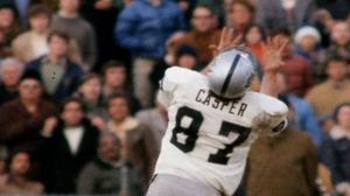

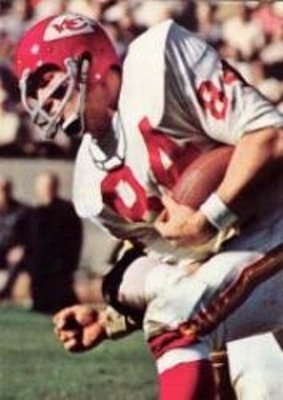
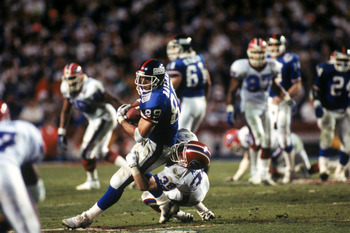


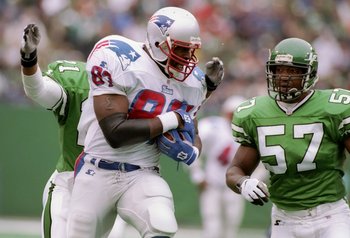



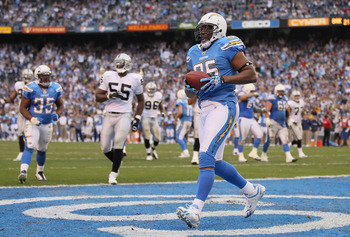



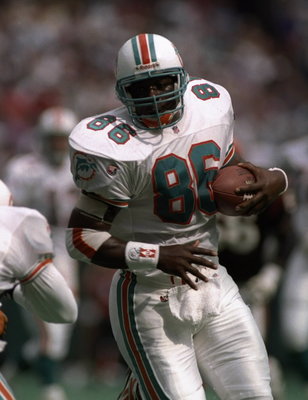

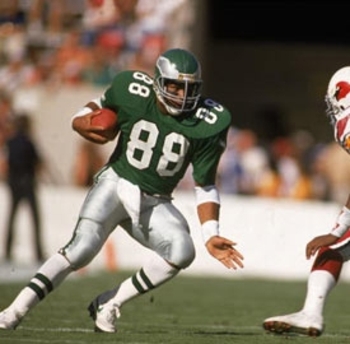




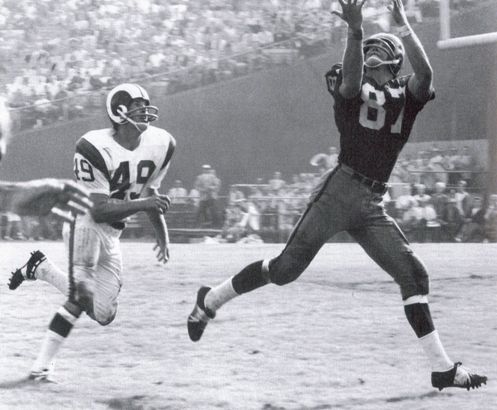


By not including Jason Witten as one of the NEXT THREE TEs to be going into the Hall, you are clearly showing anti-Cowboys bias....cuz Witten is just as much of a lock as Gates.
ReplyDeleteYour website content is impressive and magnificent, I would like to say your website is also superb.Please explore our remarkable and valuable website
ReplyDeletePackers And Movers bengaluru to Hyderabad
Packers And Movers Chikkalasandra bengaluru
Packers And Movers CV Raman Nagar
Packers And Movers Bangalore claim to be the #best packers and movers Bangalore offering premium administrations and fulfilling each client that has benefited our administrations.
I cannot truly enable but admire your weblog, your weblog is so adorable and great.It has given me courage to try scarier things. I tend to steer clear of them but not anymore.
ReplyDeletePackers And Movers Hyderabad
Packers And Movers madhapur Hyderabad
Packers And Movers hitechcity Hyderabad
I would like more information about this, because it is very nice., Thanks for sharing.
ReplyDeletehttps://www.roknelbeet.com/نقل-اثاث-بجدة/
https://www.roknelbeet.com/نقل-اثاث-بالدمام/
https://www.roknelbeet.com/نقل-اثاث-بمكة/
https://www.roknelbeet.com/تخزين-اثاث-بالرياض/
شركة تنظيف مجالس بالرس
ReplyDelete